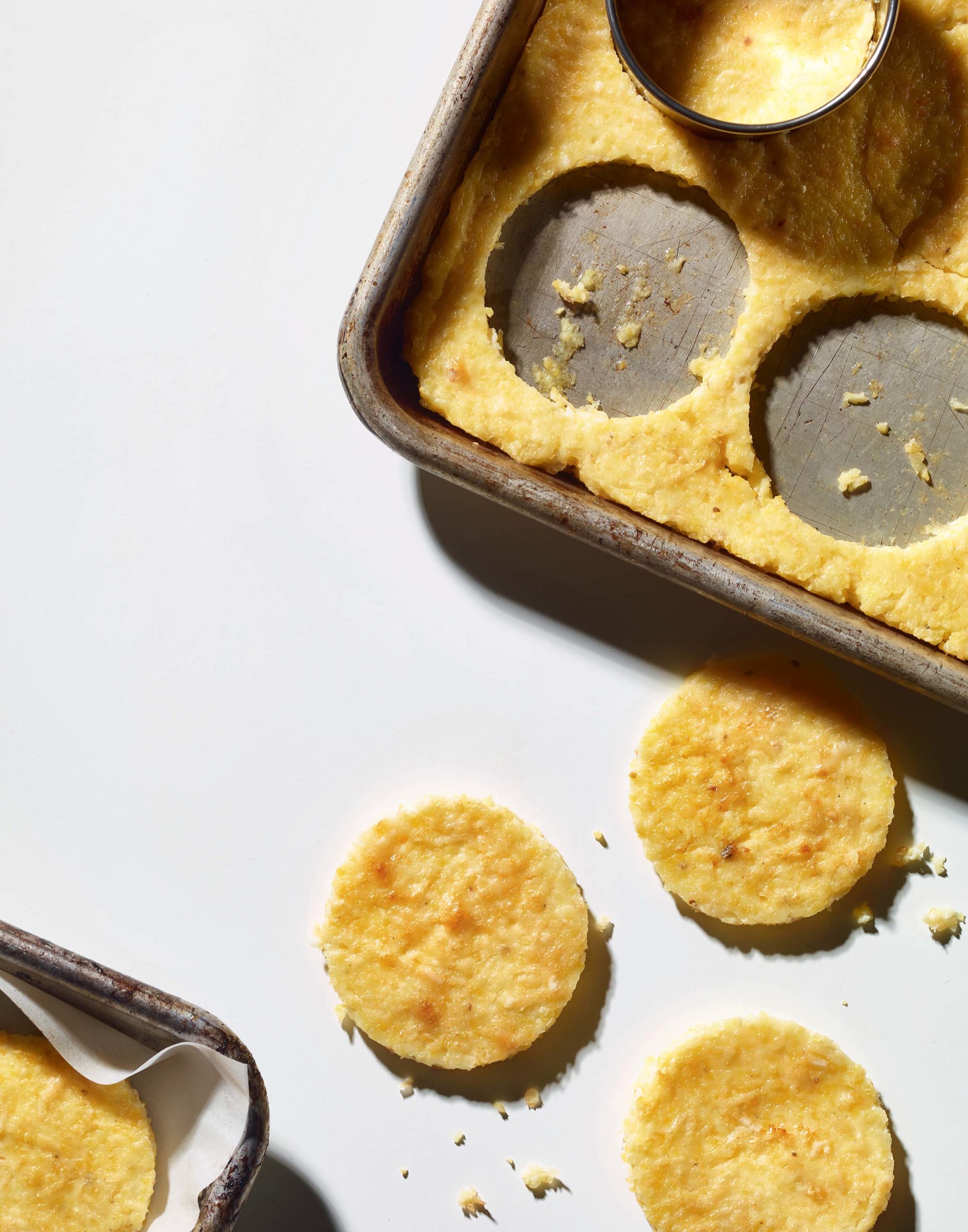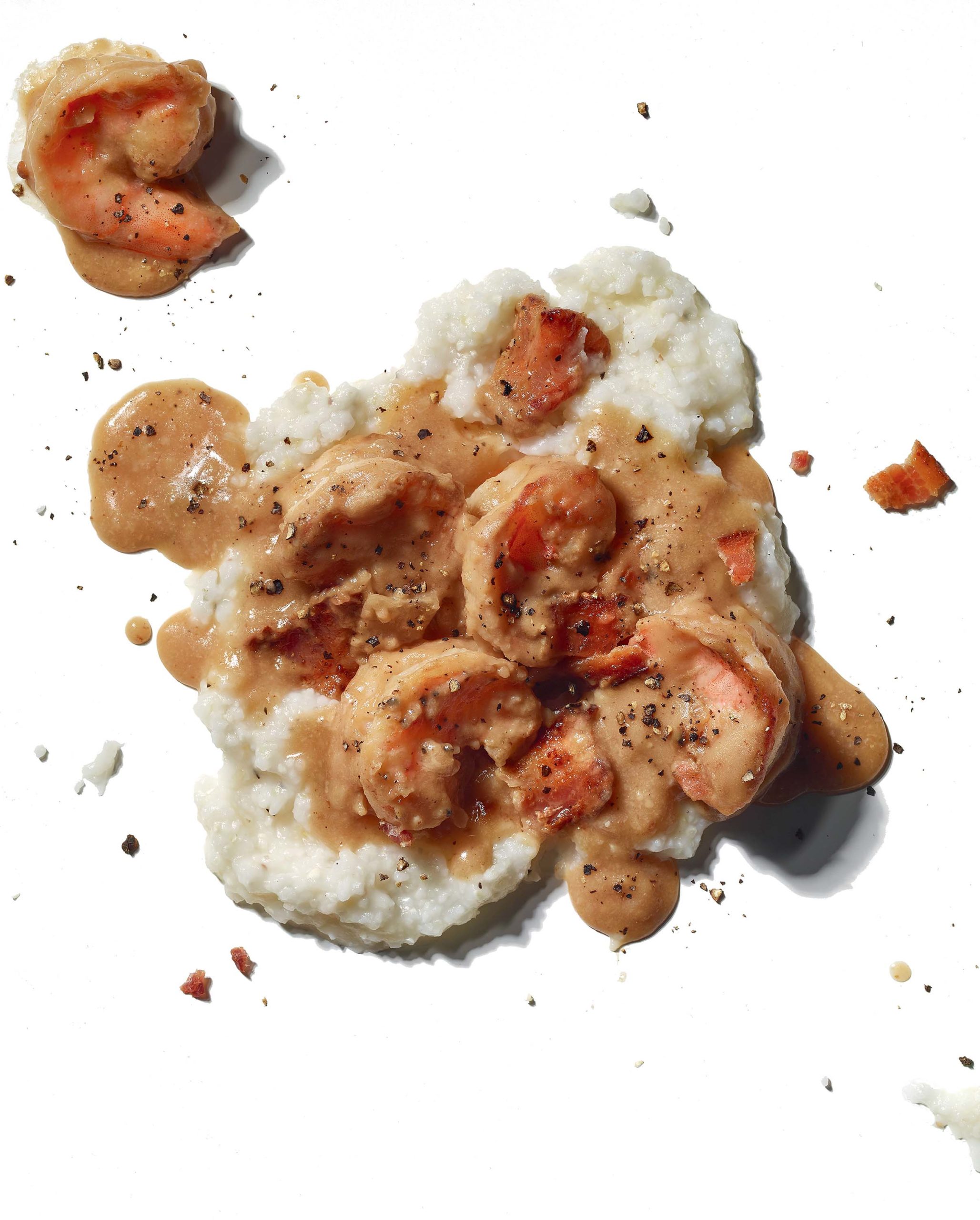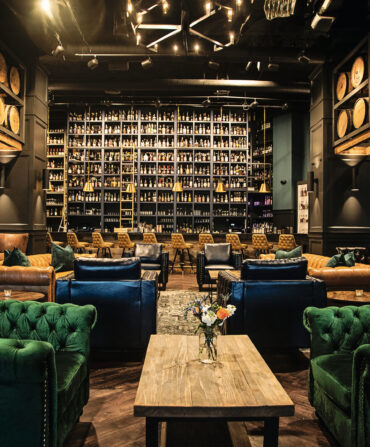Food & Drink
The Ultimate Guide to Grits
Kernels of wisdom about one of the South’s fundamental foods
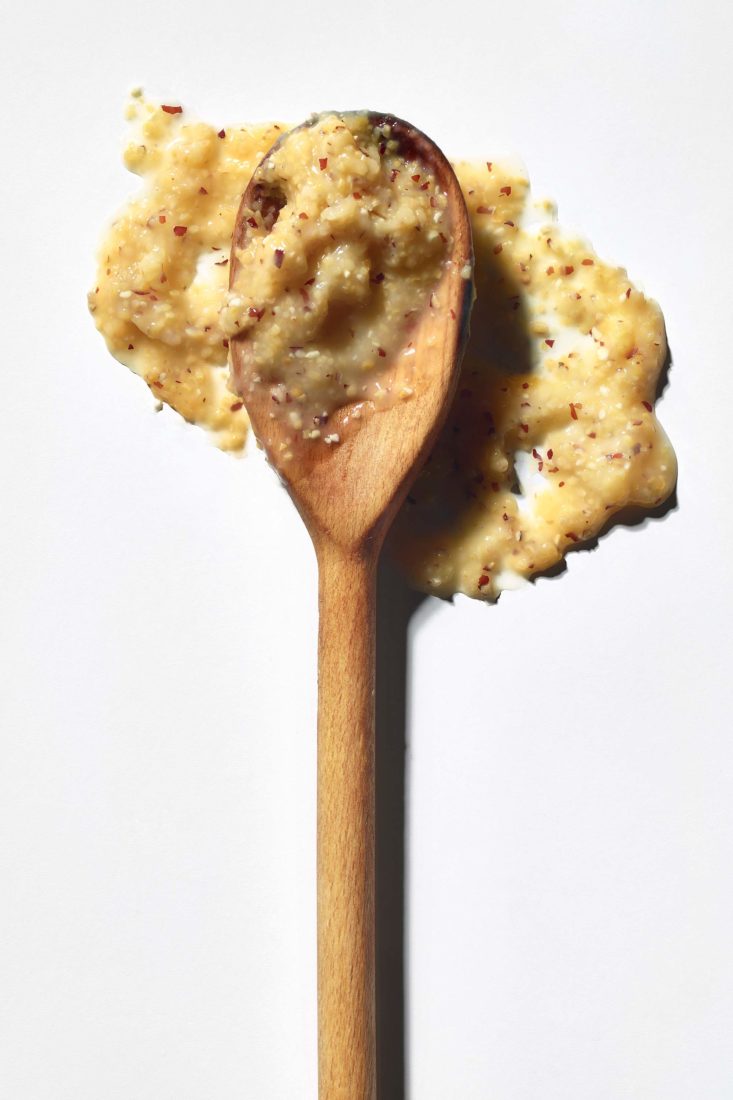
Photo: The Vorhees
“If I don’t love you, baby / Grits ain’t grocery,” quipped Little Milton in his famous 1969 song. We can assume that the Mississippi bluesman did, in fact, love his baby, because we know that grits are groceries—and so much more. Grits have sustained the South since before there even was a South, from the pre-Columbian civilizations that transformed a wild native grass called teosinte into corn to the European colonists who used water-powered milling technology to grind out what we today call grits (from the Old English grytte). And they haven’t changed much over those centuries. Perhaps that’s why Southerners love grits so much: They are one of our region’s purest culinary pleasures, rooted in history.
But they’re not necessarily the simplest. Cooking the perfect pot of grits is a choose-your-own adventure, and just about every cook in the South has opinions about how best to prepare them. With that in mind, we canvassed more than fifty of the region’s brightest culinary lights—chefs, cookbook authors, restaurant critics, historians, and millers—for their best tips. Herewith, their collected—and sometimes conflicting—advice.
1. First, pick good grits
“Start with the best grits you can get your hands on,” says chef Edouardo Jordan, who grew up in Florida and runs the modern Southern food temple Junebaby in Seattle. (He orders his grits from Marsh Hen Mill on Edisto Island, South Carolina.) “Most grocery-store grits have been sitting on shelves over six months.”
“Ninety-nine percent of commercial grits tasted like sawdust when I opened Highlands Bar & Grill in 1982,” says chef Frank Stitt of his iconic Birmingham, Alabama, restaurant. “I would walk a block away to the Golden Temple health-food store—it was my first source of stone-ground grits that actually had texture and flavor. Now many of us chefs have gotten back to how it used to be in the South, when there were mills and you had relationships there. I work with a local mill called McEwen & Sons.”
Chef David Guas of Bayou Bakery in Arlington, Virginia, orders one-hundred-pound sacks of grits milled at Mount Vernon in Virginia, on the same gristmill George Washington used 250 years ago. “When I first heard the clicking and the clanking of the wheels,” he says, “it was like a spiritual moment.”
“White corn was the norm before the twentieth century,” says the food historian Michael W. Twitty, “and yellow corn was usually associated with animal feed. There is a cultural bias for white food, but it goes beyond that. It’s the dividing line between older farm-raised varieties and industrial.” Today many chefs use yellow grits for a slightly cornier flavor, and white for a milder taste.
“Old-timers might say they want a bowl of hominy when they mean grits,” says Greg Johnsman of Marsh Hen Mill. “As far as making actual hominy, which involves lye, it’s a wet process and usually ground on a lava stone. Grits are ground dry on stone. White and yellow are your starting points, then Jimmy Red corn is nutty. Blue is very floral and earthy. Guinea Flint—an orange corn—is rich and savory.”
“I use coarse white grits from Anson Mills,” says chef Kevin Johnson of the Grocery in Charleston, South Carolina. “Their texture is incredible.”
No matter the color, all corn has terroir. “It’s the limestone in the water and the soil,” explains the Appalachian cooking authority and author Ronni Lundy, who recommends Kentucky’s Weisenberger Mills. “That’s also what we say about bourbon, and if it’s good enough for bourbon, it’s good enough for grits.”
Chef Ashley Christensen sometimes substitutes broken bits of rice called middlings, a by-product of the milling process, for corn grits in dishes at Poole’s in Raleigh. “You get the nuttiness and structure of the exterior of the grain,” she says, “and all of the sweetness and texture from the interior starches.”
If you’re considering quick grits, don’t. They lack the, well, grit that makes grits grits. Charlotte food writer Kathleen Purvis puts a finer point on it: “Instant grits are a crime against humanity.”
Once you’ve got good grits, keep them that way. “If your grits are not in a refrigerated display when you buy them, they have less than half their original flavor potential,” says Anson Mills owner Glenn Roberts. “If your grits aren’t in the refrigerator now, you lost at least half of the flavor before you cook them.”
MORE: TEN OF THE SOUTH’S BEST
MAIL-ORDER GRITS
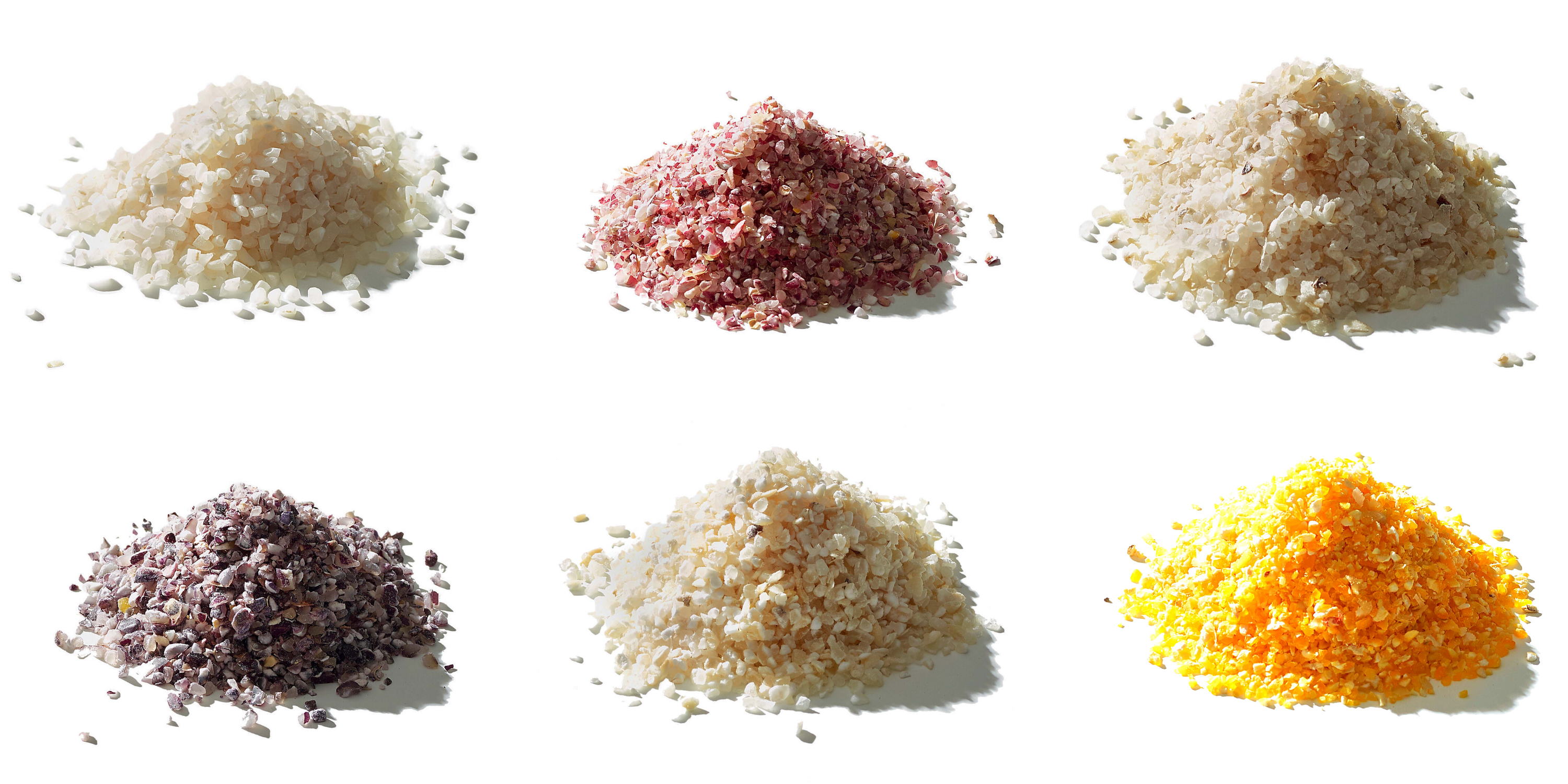
Clockwise from top left: rice grains, or middlings, from Delta Blues Rice; Millers All Day pink "unicorn" grits; McEwen & Sons grits, a favorite of Frank Stitt; grits from Weisenberger Mills, a Kentucky favorite; Food For the Southern Soul grits; Anson Mills blue corn grits, which trace back to the Cherokee Nation.
2. Rinse, soak, maybe toast
“Pour off the hucks,” advises Emily Meggett, an eighty-seven-year-old matriarch of South Carolina’s Edisto Island, who has trained generations of cooks in traditional Gullah and Lowcountry cooking methods. She covers the grits with water and skims or pours off the “hucks” (bits of fiber, akin to the chaff of wheat) that float to the top until the water runs clear—two or three times. Her process also shortens the grits’ cooking time, Meggett says, because it skims away the pieces that take longer to cook.
Another reason to give your grits a bath: hydration. “Soak your grits in water overnight before you cook them,” says chef John Sleasman at the Bar at Willett in Bardstown, Kentucky. “It ensures that every kernel is properly hydrated, which will enhance both the flavor and the texture.”
Also try this: “Toast the grits in the oven before cooking,” says chef Brandon Carter of FARM in Bluffton, South Carolina. “It will give them a slight popcorn flavor.”
3. Take stock of your
liquid assets

The Voorhes
Purists stand by water only. “Culturally, for me growing up, cream and buttermilk in grits was a waste of an expensive product,” says the chef BJ Dennis, an advocate for Gullah cooking in the Lowcountry of South Carolina. “All you need is water.”
Carla Hall, the Tennessee-born author and TV personality, agrees: “Cream in grits is cheating if you’re looking for creamy grits.” Residual starches in ground corn are what give grits their creamy quality as they cook.
“If you were a cowboy driving cattle, grits and hot water would make a filling meal,” says Tom Perini, of Perini Ranch Steakhouse in Buffalo Gap, Texas. “I like the four-to-one ratio of liquid to dry.”
Chef Anoosh Shariat of Anoosh Bistro in Louisville whisks his grits into a pan of cold water. “Adding the grits before the water heats helps avoid lumps,” he says. Or, “rain the grits into the liquid and whisk constantly until all the grits are added,” says chef Ethan Holmes at Mattie’s in Austin, Texas. “This will allow each granule to be coated with the hot liquid, thus preventing lumps.”
Chef Micah Martello of the Louisiana food truck Fete au Fete prefers chicken stock and this method: “Turn off the heat after the grits are whisked into the boiling stock,” he says. “Then let them soak for about fifteen minutes before turning the heat back on very low.”
“Use chicken broth and cream,” says Augusta, Georgia, caterer Vera Stewart. “Trust me, the chicken broth opens up the grits.”
“Savory coconut milk is really dynamic,” says Von Diaz, author of the Puerto Rico–meets–Georgia cookbook Coconuts & Collards. “Have additional liquid on hand, whether that’s broth, coconut or regular milk, or water, in case the grits soak it all up before they’re done.”
4. Season, simmer, and
stir, stir, stir

The Voorhes
Salt the cooking liquid. “A finished product is never greater than the sum of its parts, so as a result, we flavor every step of what we do,” says John Currence, the chef-owner of City Grocery in Oxford, Mississippi, and Big Bad Breakfast, with locations throughout the South. “You can cook grits with water and finish with salt and butter and a little cheese and they will be perfectly delicious, but never as much so as when you start with a better base.”
If you forget to salt at the beginning, “add salt to your grits as they’re cooking,” says indigenous food educator and chef Dave Smoke McCluskey, who is based near Augusta, Georgia. “Adding at the midway point makes them taste better because the flavor cooks into the grain.”
“Plan on staying near the stove for the entire cooking process, as they scorch super easily,” says chef Beth LittleJohn of Players’ Retreat in Raleigh. “But stirring is most certainly worth it. Grits, like risotto, are a labor of love.”
Or take a tip from North Carolina chef and television personality Vivian Howard and use a double boiler to avoid stirring so frequently. “I can’t bear standing over something for more than thirty seconds,” she says, adding that the gentle heat prevents a burned breakfast. Howard has a good model for this technique: Edna Lewis also made her grits with a double boiler (as described in her 1988 cookbook In Pursuit of Flavor, rereleased last year). Lewis only stopped to stir them from time to time while prepping the rest of a meal.
“Generally, slower is better and gentler,” says Scott Peacock, the Marion, Alabama, chef, formerly of Watershed in Decatur, Georgia, who learned many of his techniques from Lewis. “Things swell and take their time rather than being pressured into performing.” Most coarse and stone-ground grits will need at least forty minutes of cook time, sometimes an hour.
And use a wooden spoon, Frank Stitt says. “There’s just something kind of sensual about the feel of stirring grits with a wooden spoon,” he says, “the way the spoon rubs against the bottom of the pot.”
5. Or, step away from the stove
“I let grits cook on low in the Crock-Pot overnight,” confesses John T. Edge, director of the Southern Foodways Alliance in Oxford, Mississippi.
North Carolinian Sheri Castle, the author of Instantly Southern and other cookbooks, preps grits in an Instant Pot. “Use coarse grits. Fine-ground grits sink to the bottom, where they stick, scorch, and trigger the dreaded BURN message,” she says. “Bring them to a simmer, whisking all the while, before commencing pressure-cooking.”
“The best way to make grits is in the oven,” says chef-owner Clayton Rollison of Lucky Rooster Kitchen + Bar on Hilton Head Island, South Carolina. He starts them on the stove top, with water. “Once the water is boiling, whisk in the grits and bring them to a gentle simmer while constantly whisking. Pull them off the heat, put the lid back on, and pop in the oven for up to three hours at three hundred degrees. They caramelize and get a little nutty.” Once they are out of the oven, Rollison puts them back on the stove for just a few minutes and stirs in butter and cream.
Nathalie Dupree, the Charleston, South Carolina–based chef, television personality, and author of an entire cookbook on shrimp and grits, says: “I cook all my grits in the microwave.” Really. “I use an Anchor Hocking type of batter bowl, the kind with a handle like a measuring cup. I use a ratio of four parts liquid to one part grits, half water and milk, maybe cream at the end. I cook them on high, for up to an hour, stirring vigorously every ten minutes or so and adding liquid as needed. If I forget them, they don’t burn, they just sit there unattended, and are happy to see me when I return.”
6. One thing we all agree on…
“Grits beg for butter, and they’re best when you give it to them,” Scott Peacock says.
“I add a lot of butter, salt, and pepper to finish,” says chef Justin Burdett at Crook’s Corner in Chapel Hill, North Carolina.
“We’d have grits at breakfast after church on Sunday,” says the culinary historian Jessica B. Harris. “I remain a purist—a bit of butter.”
“I finish grits with a large chunk of butter,” says New Orleans chef Isaac Toups. “It’s my favorite thing to eat with fried fish.”
7. Fuss them up with cheese,
hot sauce, pulled pork, lime,
ginger, even jelly
Emeril Lagasse lays it out: “Grits cooked with salted water and served with a pat of butter can be so comforting in the simplest way,” the chef says. “But add heavy cream and grated cheese to those same grits and you have a whole other experience. They can go from simple and homey to kicked up and complex. I love adding sautéed andouille to cheese grits and then topping that with a fried egg.”
For a warming Indian spice–inflected dish, take a note from chef Maneet Chauhan of Chauhan Ale & Masala House and others in Nashville. “Once the grits are cooked, heat coconut oil on the stove, and add black mustard seeds, curry leaves, grated ginger, and cilantro,” she says. “Once the black mustard seeds start popping, pour into the grits and mix well. Finish with a squeeze of lime juice.”
Chef John Fleer of Rhubarb in Asheville learned that when his dad was a grad student at Florida State, he ate cheap dining-hall grits regularly but tweaked them by, Fleer says, “stirring in one of the free grape jelly packets on the dining-hall table. Try it,” he says. “It’s pretty tasty!”
“Grits paired with pulled pork may sound like a weird combination,” says Rodney Scott, James Beard Award–winning pit master. “But they go great together.” He finishes his barbecue-topped grits with a shake of Tabasco.
“I like to use vanilla in grits when pairing them with lobster and scallops,” says chef Steven Greene of Herons at the Umstead Hotel and Spa in Cary, North Carolina.
Chef David Bancroft of Acre in Auburn, Alabama, gets a little weepy: “There’s something about super-buttery grits with a creamy ladleful of tomato gravy—gives me all the feels.”
“One of my favorites,” says Jimmy Hagood, owner of the specialty-foods company Food for the Southern Soul and whose family founded a mill in Pickens, South Carolina, “is when you grill duck breasts and put them on top of grits with all the residue of the juices.” Hagood starts his grits in the slow cooker before early-morning hunts—few things are more comforting than coming home to a hot breakfast after sitting in a duck blind before dawn, he says. “That’s heaven.”
Chef Matt Bolus of 404 Kitchen in Nashville adds Velveeta. “Yes, the cheese-like product,” Bolus says. “It incorporates perfectly without getting greasy.”
One cheese is not enough for chef Jonathan Koplin of Brother Juniper’s diner in Memphis: “Our grits are made with two cheddars, mozzarella, and Swiss,” he says.
The Lilburn, Georgia, chef Jennifer Hill Booker poaches an egg in her grits. “When the grits are done and seasoned, I make a well, crack an egg right into that spot, and put the lid on the pot for about five minutes,” she says. “There is nothing more delightful than cracking into the egg yolk and watching that golden goodness ooze out—except maybe eating it.”
Or take a decadent approach. “You know what’s a good Sunday dinner idea? A top-your-own-grits bar,” says New York Times food editor Sam Sifton, author of the cookbook See You on Sunday. Set out bacon, shrimp, cheeses, scallions, jalapeños, hot sauces, and fried chicken.
8. Get creative with leftovers
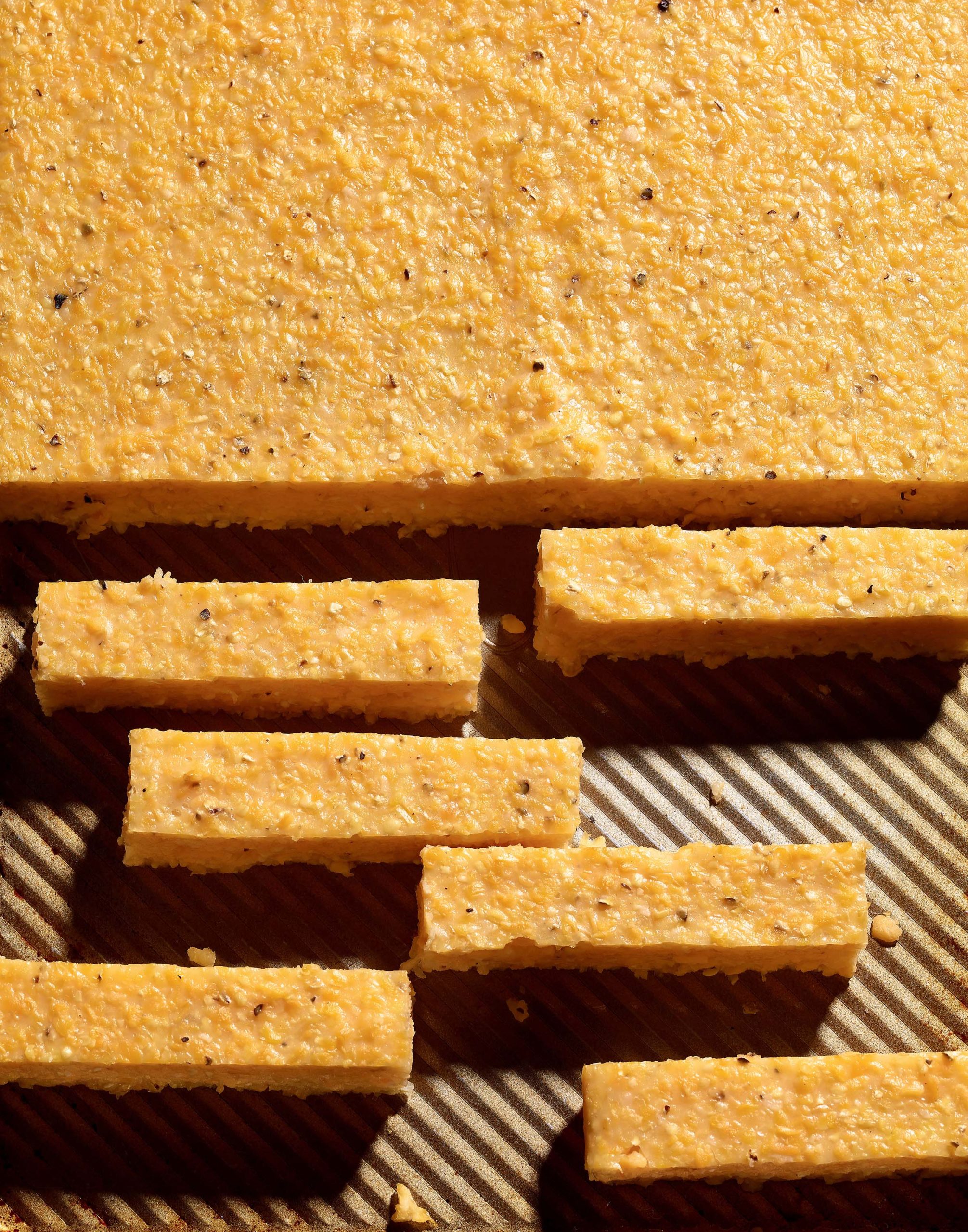
THE VOORHES
“One thing that is often overlooked is day-old grits,” says Bill Smith, the Chapel Hill, North Carolina, chef who ran Crook’s Corner for twenty-five years. “Let them set up overnight, cut them into squares, reheat them in the oven, and then finish them off in the broiler with a little Parmesan cheese and herb butter. They become all brown and crispy. I love them with chicken livers in brown sauce.”
“Place any leftover grits into a flat pan, spread evenly, and refrigerate; once they’re firm, you can slice them, bread them, and fry them in butter to make grits fries or grits cakes,” says Erin Byers Murray, author of Grits: A Cultural & Culinary Journey through the South.
“I am most partial to tamales made with leftover grits and stuffed with shredded chicken in red chile sauce, wrapped in fresh banana leaves, and steamed,” says Sandra A. Gutierrez, author of The New Southern-Latino Table.
This tip from Edward Lee of 610 Magnolia in Louisville is delightfully resourceful, and something only a chef would think of: “The top of a pot of cooked grits develops a skin,” he says. “Gently peel this off and transfer to a sheet pan. Bake in a low oven until the skin becomes crispy. Break this into little crackers and serve with pimento cheese.”
Every kernel of grits wisdom is a pass-along gift. But it’s up to the individual cook to find his or her own formula. Chef Karl Worley of Biscuit Love in Nashville and Franklin, Tennessee, has even found a surprising way to make grits appealing during the South’s scorching months. “I love cold grits in the summertime,” he says. “Think rice pudding, but with grits, and top them with whatever fruit you find at the market.”


